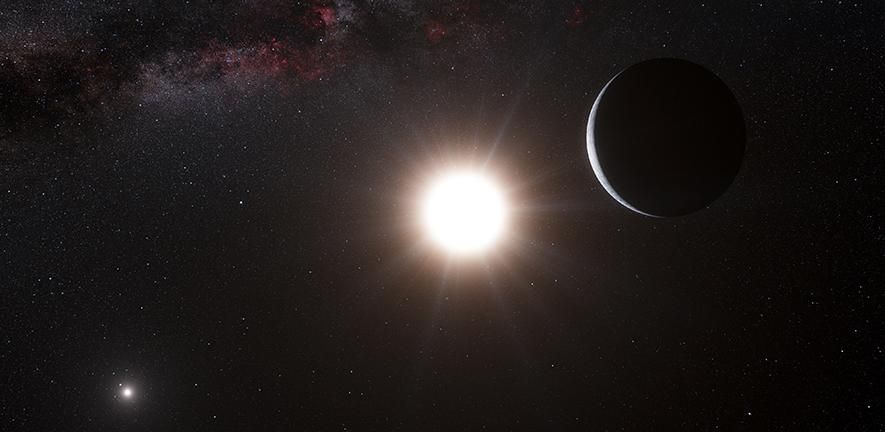
It's hard for an exoplanet to establish itself in a neighborhood built around not one but two stars. But astronomers have spotted plenty of such alien worlds, sometimes nicknamed "Tatooines" after the "Star Wars" planet where Luke Skywalker watches a double sunset.
In new research, scientists tackle how a planet might survive orbiting one star in a pair with a companion star located about as far away as Uranus is from the sun. That combination forms a particularly chaotic environment, one in which it's difficult for globs of material to stick together well enough to build up planets, as astronomers' primary idea of planet formation goes.
"This theory makes sense for planetary systems formed around a single star, but planet formation in binary systems is more complicated, because the companion star acts like a giant eggbeater, dynamically exciting the protoplanetary disc," study co-author Roman Rafikov, an astrophysicist at the University of Cambridge in the U.K., said in a statement.
Related: 7 ways to discover alien planets
Having a second star in the picture whips up the speed at which globs of matter collide, preventing them from sticking together, the scientists think.
"But because of the gravitational 'eggbeater' effect of the companion star in a binary system, the solid particles there collide with each other at much higher velocity," Kedron Silsbee, a physicist at the Max Planck Institute for Extraterrestrial Physics in Germany, said in the same statement. "So, when they collide, they destroy each other."
The particular arrangement of stars and planet — two stars separated by about 20 times the distance between the sun and the Earth, with a planet orbiting one of them — the scientists analyzed wasn't chosen randomly: Rafikov and his colleagues were inspired by the nearest system to our own, called Alpha Centauri. But there's no way to wind back the clock on Alpha Centauri itself, so the scientists turned to simulations.
Those simulations returned some scenarios where a planet managed to coexist with a pair of stars. In particular, for a planet to successfully form in this pattern, the scientists found that the system needed to start out with a fairly even rubble disk surrounding the stars. That disk also needed to be pretty circular and the pieces of planet, also known as planetesimals, need to start out about 6 miles (10 kilometers) wide or bigger.
Those factors combined slow down the interactions between hunks of would-be planet enough that material can build into alien worlds, the scientists think. The research may support what scientists call the streaming instability model of forming planetesimals, which clumps pebble- and boulder- size pieces of material surrounded by gas into larger planetesimals.
According to the statement, the scientists hope that this research can serve as a stepping stone to understanding the still-more-complicated "Tatooine" worlds, where an exoplanet orbits both the stars that make up a binary system.
The research is described in a paper accepted for publication by the journal Astronomy & Astrophysics, a version of which was posted to the preprint server arXiv.org on July 23.
Email Meghan Bartels at mbartels@space.com or follow her on Twitter @meghanbartels. Follow us on Twitter @Spacedotcom and on Facebook.
https://www.space.com/why-dont-binary-stars-destroy-new-planets
2021-07-28 16:30:00Z
CAIiEMdyBQFXVe3OvT-ANiYVtpcqMwgEKioIACIQiaYKTaVj4jekEifjHCx8jCoUCAoiEImmCk2lY-I3pBIn4xwsfIww37rKBg
Bagikan Berita Ini















0 Response to "How do 'Tatooine' planets survive with 2 suns? - Space.com"
Post a Comment